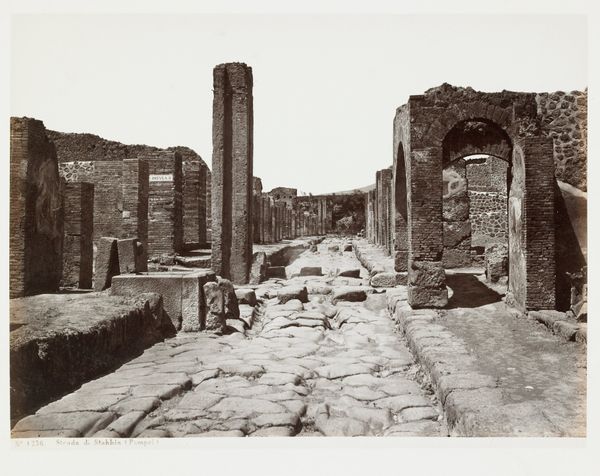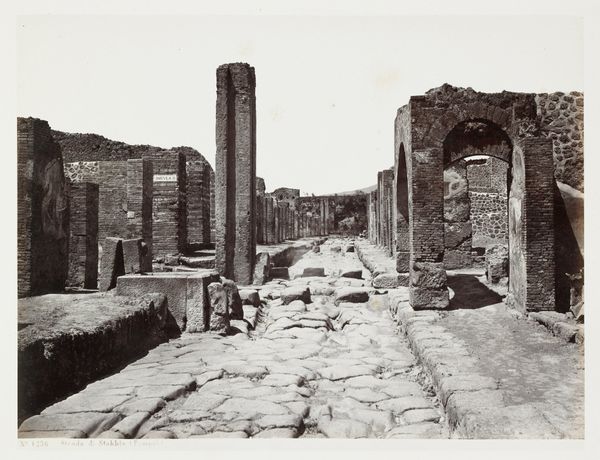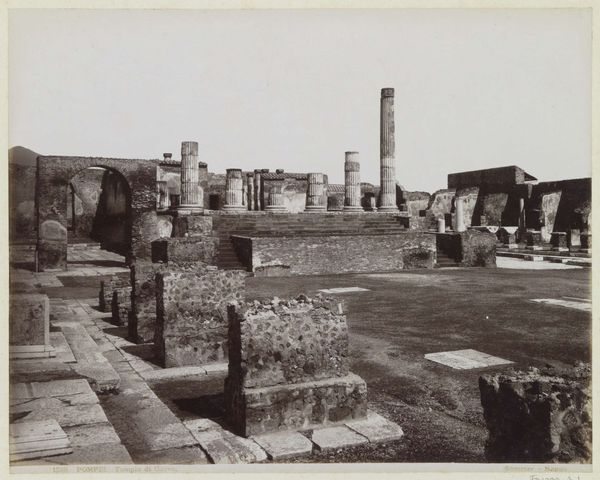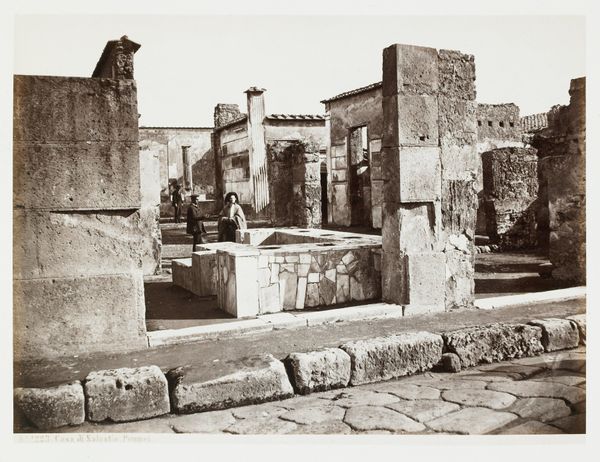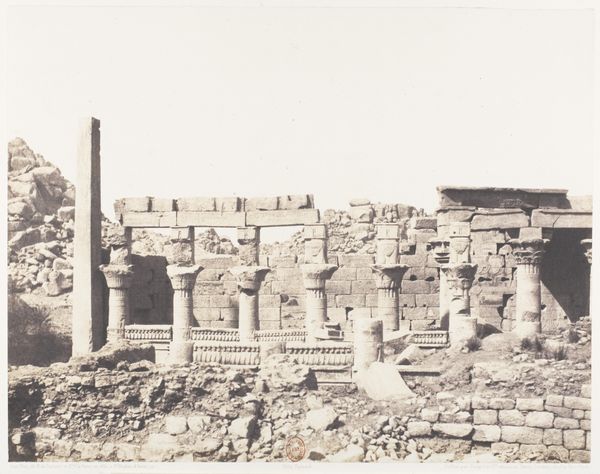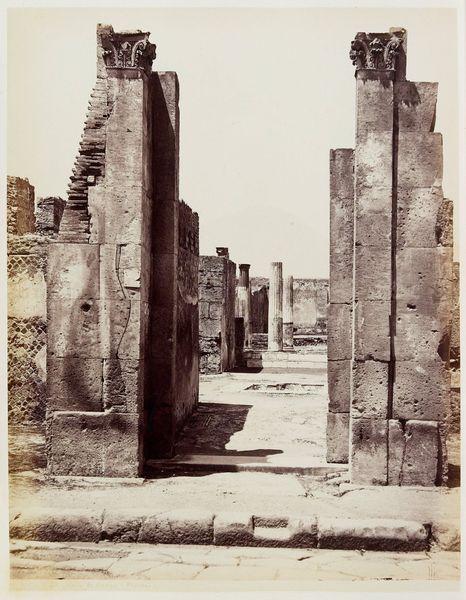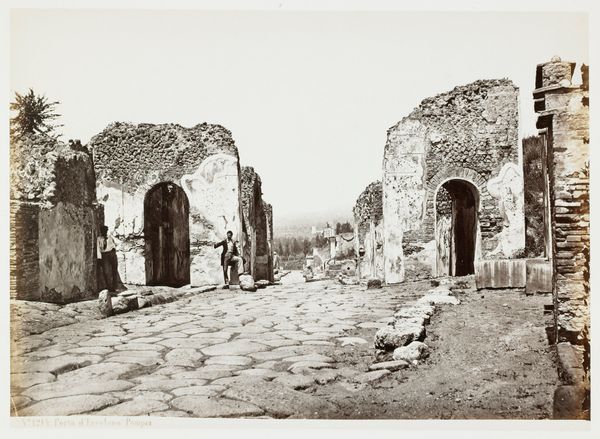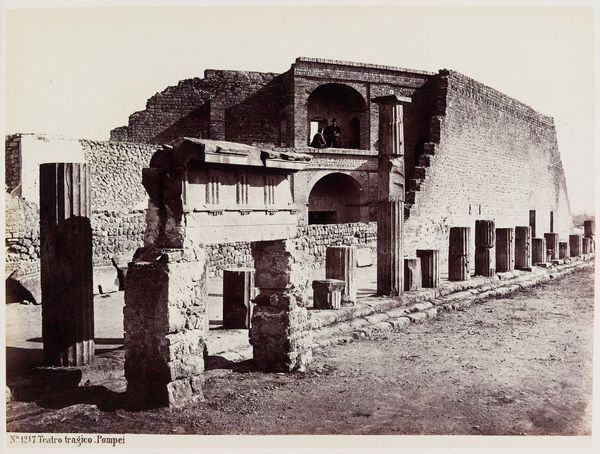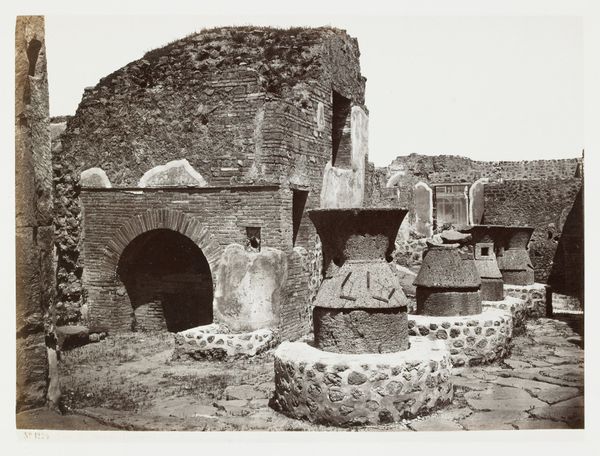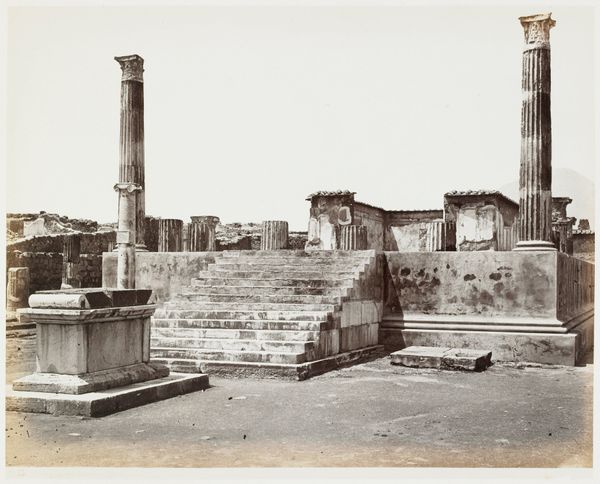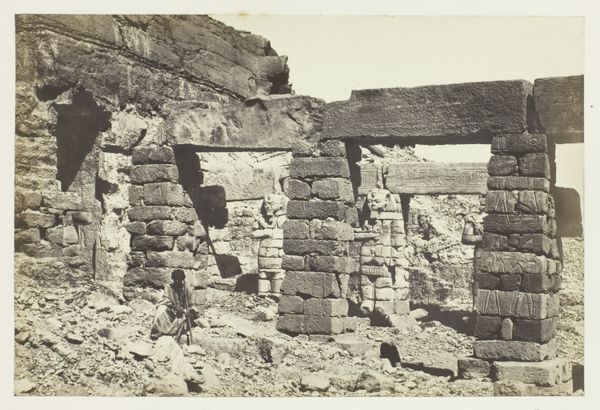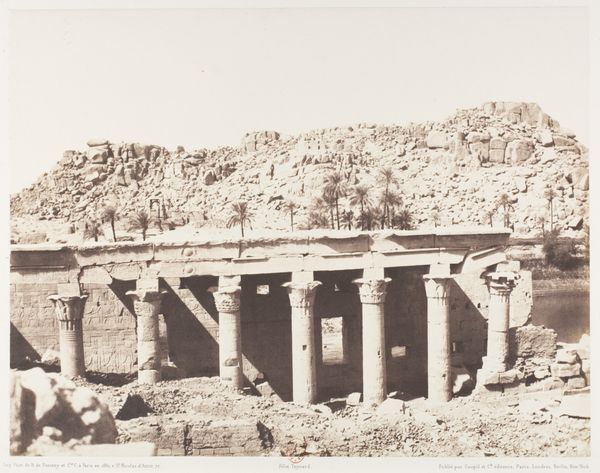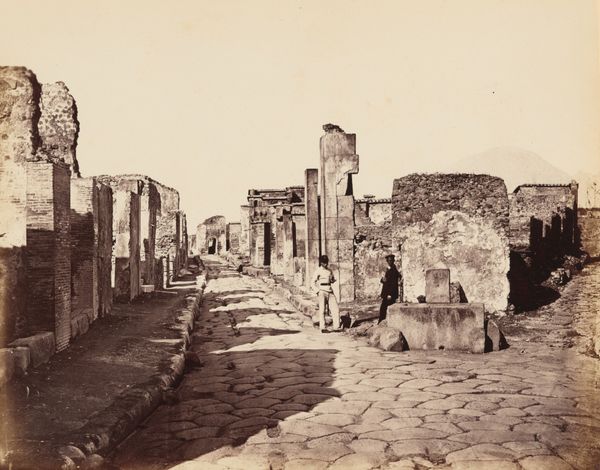
albumen-print, print, photography, site-specific, albumen-print
#
albumen-print
# print
#
landscape
#
photography
#
ancient-mediterranean
#
site-specific
#
monochrome photography
#
history-painting
#
italy
#
albumen-print
Dimensions: 7 1/16 x 9 5/8 in. (17.94 x 24.45 cm) (image)10 3/4 x 13 1/4 in. (27.31 x 33.66 cm) (mount)
Copyright: Public Domain
Giorgio Sommer made this albumen silver print of the Tempio di Giove in Pompeii sometime in the late 19th century. This image connects to a wider fascination with antiquity. After being buried by the eruption of Mount Vesuvius in 79 AD, Pompeii was rediscovered in the 18th century, becoming an important site of archaeological excavation. Sommer’s photograph creates meaning through its visual codes and historical associations. Made in Italy, it documents the ruins of what was once the main temple in Pompeii, dedicated to Jupiter, the chief Roman deity. During this period, the temple became a popular subject for artists and photographers alike. The ruins of Pompeii served as a reminder of the transience of human achievement and the power of nature. Art historians delve into a range of resources—from archaeological reports to travel accounts—to better understand the social and institutional contexts that shaped both the creation and the reception of works like Sommer's photograph. The meaning of art is contingent on social and institutional context.
Comments
No comments
Be the first to comment and join the conversation on the ultimate creative platform.
